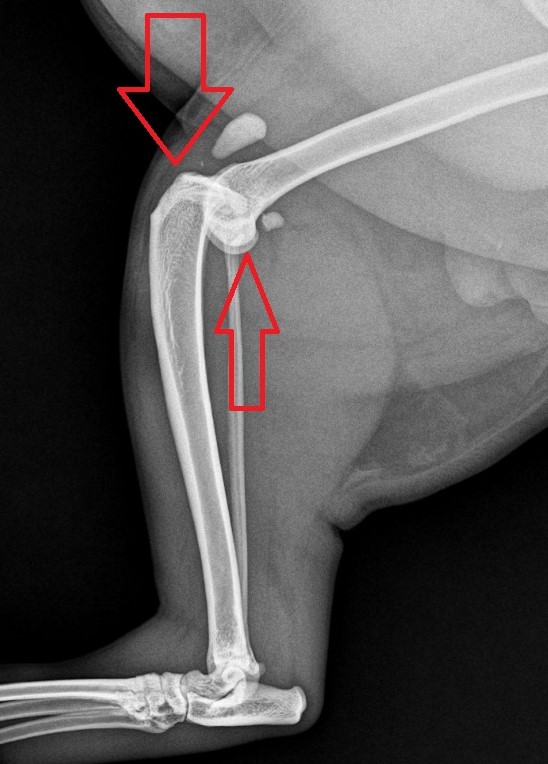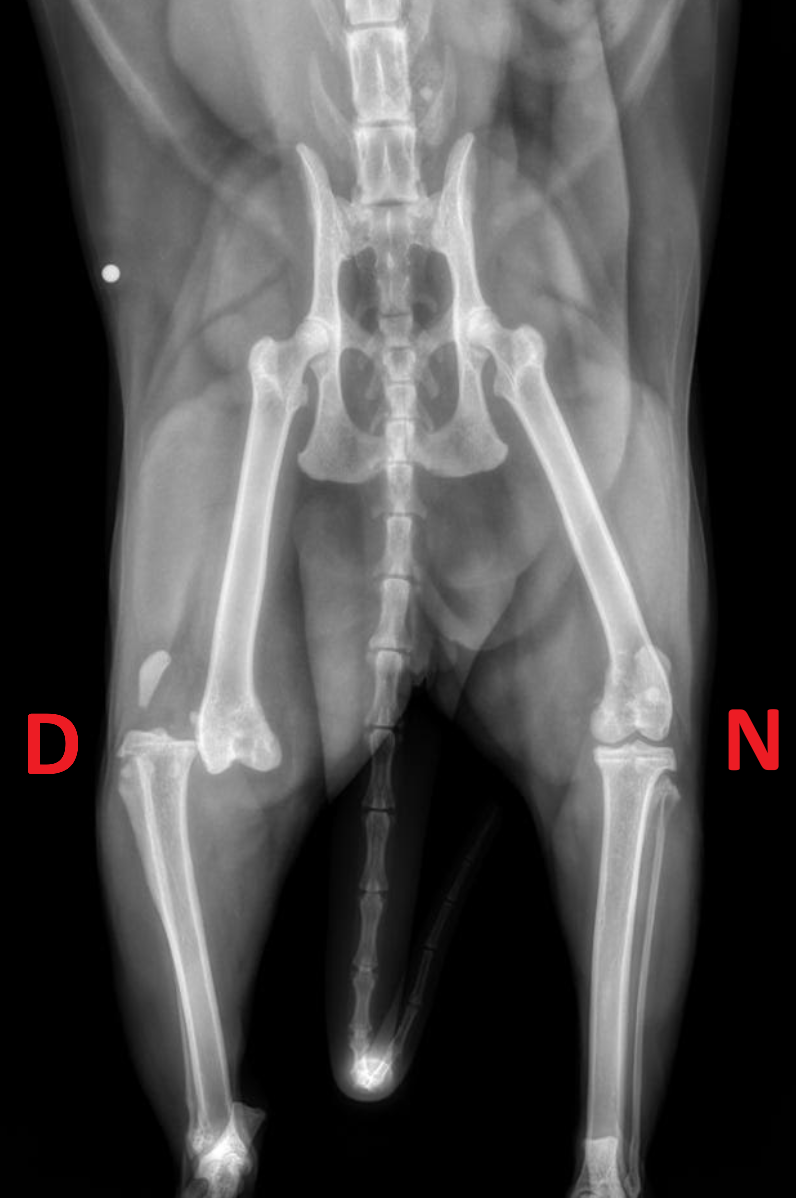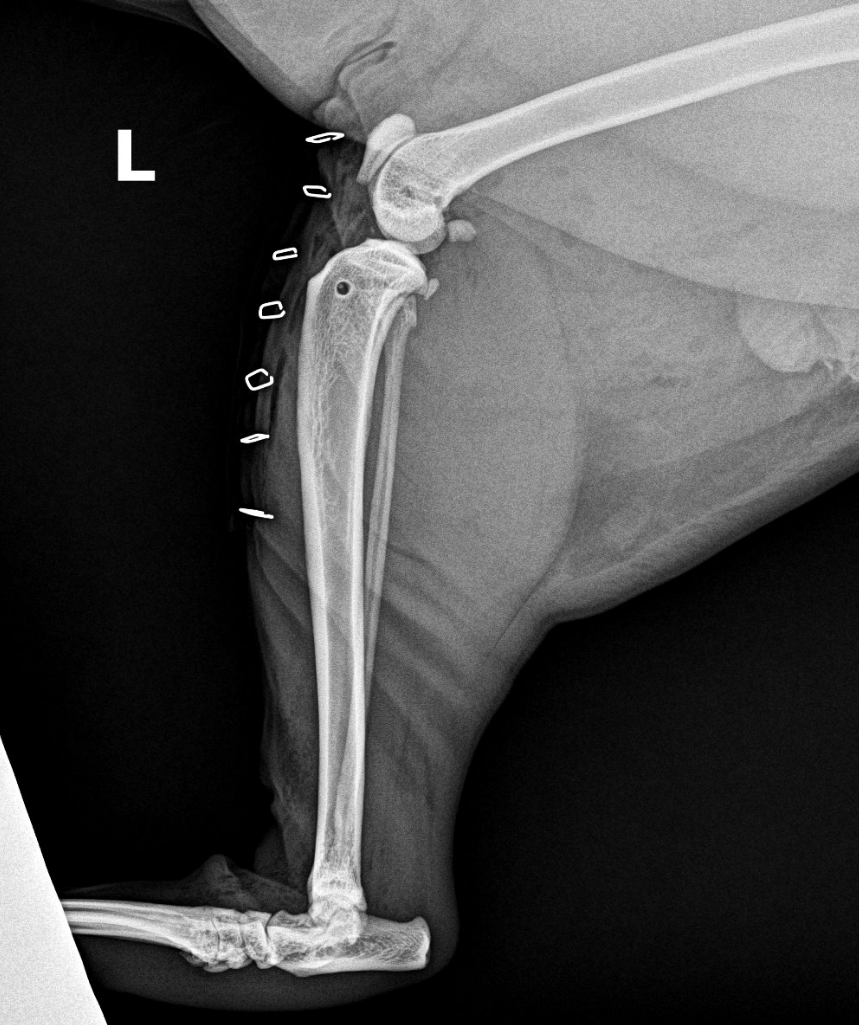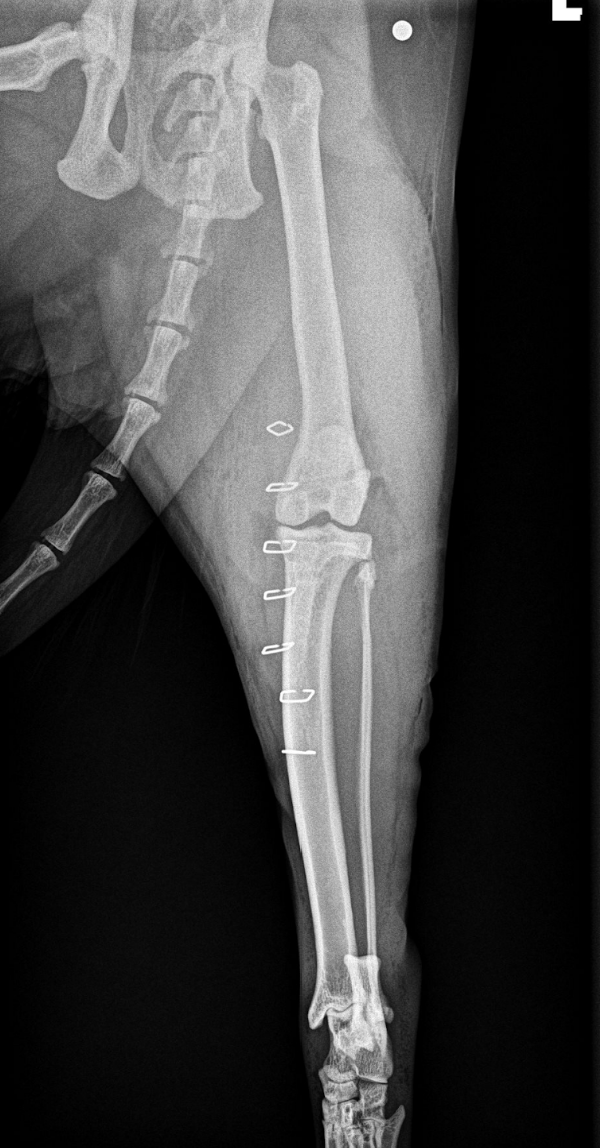
Willie, a 12-year-old kitty, was limping on his left back leg after trauma of unknown origin.
His owner explains: “That evening, Willie didn’t come home at his usual time. I had a bad feeling, so I tracked him down with the radio-tracking device fitted to his collar. Turns out he ventured into someone’s yard and sustained an injury so serious that he was immobile. A desperate meow greeted me when he heard me call his name. The yard was overgrown, like a jungle, with no way in or out. I had to climb a fence to get to him. If it weren’t for his tracker leading me to him, I believe his life would have ended in that inescapable yard.
Once home, I placed him on the floor and watched as his back leg collapsed under him. I knew there was something very wrong. I couldn’t make him comfortable.”
The owner took Willie to his family vet. An exam revealed severe pain in the left knee. X-rays under sedation showed pretty drastic findings: the knee was completely dislocated (luxated). This is called a “deranged knee.”

View of the knee from the side. The 2 red arrows should be on top of each other in a normal knee!
I suspected that Willie’s leg got caught somewhere while he escaped some danger.
While Willie was running for his life, he pulled on his leg, and that probably caused the dramatic damage.

View of the knee from the front. Compare the Normal (N) knee on the right side to the deranged (D) knee on the left side.
What is a deranged knee?
Willie’s owner asked what this strange condition was. I explained that there are 4 ligaments in the knee: 2 inside the knee (anterior and posterior cruciate ligaments) and 2 outside the knee (collateral ligaments), one of each side.
When more than one ligament is torn, the knee is so severely affected, that the condition is called a deranged knee.
Most of the time, both cruciate ligaments and one collateral are torn. Occasionally, with very violent trauma, all 4 ligaments are torn.
How do we treat a deranged knee?
A deranged knee is so unstable (wobbly) that the only way to repair it is surgery. The goal is to make the knee more stable. Postop care involves a combination of strict rest, pain medications and physical therapy.
Willie’s owner writes: “After the surgeon explained the extent of Willie’s injury and how he would fix his leg, I was both amazed and relieved there was someone with the ability to put his little leg back together. The day of surgery couldn’t come soon enough. I just wanted him to be OK.”
During surgery, we found that Willie had all 4 torn ligaments (both collaterals and both cruciate ligaments). They were repaired with heavy nylon sutures to mimic or imitate the original ligaments.


Willie recovered smoothly from anesthesia.
His owner remembers: “I felt so relieved to hear the nurse tell me he was out of surgery and doing well. I knew his recovery would take time and lots of care.”
Willie went home the day after surgery.
Recovery after dislocated knee surgery
After 2 weeks of strict confinement and physical therapy, Willie had his stitches removed. At that point he was “toe-touching,” which means that he was starting to put gentle pressure on the foot. After another 6 weeks of continued rest and physical therapy, he had another follow-up exam: he was using the leg very well.
It was time to progressively increase his activity level. We designed a program to help him rebuild muscle and regain flexibility in the surgery knee.
Long-term outcome of a deranged knee
This story is a good reminder of the dangers pets face when they are allowed to go outside without supervision. Willie did well in the end, and he’s lucky he had such a dedicated owner.
Although patients can do well after surgery to repair a deranged knee, they will get arthritis.
We managed Willie’s arthritis by maintaining a healthy weight, and giving joint supplements (aka arthritis supplements) such as glucosamine and fish oil (omega 3 fatty acids) – for life.
In the end, Willie’s owner was happy with the outcome: “His recovery went well. He can jump and run and just be a cat again. He became closer to me as a result of everything that happened. I’m very grateful to surgeon Phil Zeltzman for showing such compassion for animals. Thank you for helping Willie.”
If you would like to learn how we can help your pet with safe surgery and anesthesia, please contact us through www.HRVSS.com
Never miss a blog by subscribing here: www.HRVSS.com/blog
Phil Zeltzman, DVM, DACVS, CVJ, Fear Free Certified
Pete Baia, DVM, MS, DACVS
